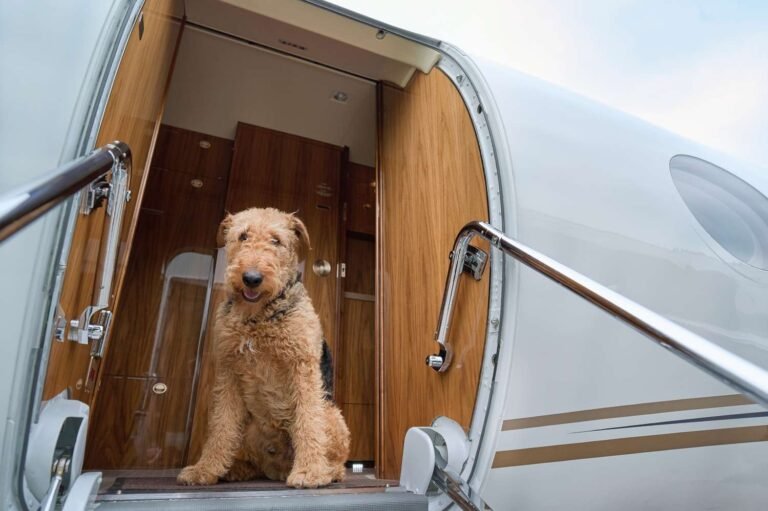Exploring the world with a pet can be a memorable experience. However, travelers should carefully review local and foreign regulations before hopping on a plane with their pet. There are a variety of regulations and documentation requirements, often dubbed “pet passports,” when traveling with pets internationally, and even within the United States.
Travel + Leisure has rounded up the latest information and guidance to keep your four-legged friends safe and comfortable before taking off.
Travel Within the United States
Taking a road trip or a flight across state lines can trigger additional documentation and legal implications for pets and their owners. While a “pet passport” isn’t explicitly required, some states require a certificate of health from a licensed veterinarian.
For travelers heading on a journey with their pet for the first time, one of the best resources is a lesser-known website within the U.S. Department of Agriculture’s (USDA) Animal and Plant Health Inspection Service. There, travelers can explore the recently-updated Travel with a Pet page that features the latest state guidance. For example, if you bring a dog or cat into the state of Texas, it must be vaccinated against rabies.
The USDA also recommends scheduling a visit with a veterinarian who can verify the pet’s health, provide necessary documentation, and specific state or country-by-country recommendations.
Traveling With Pets to Europe From the United States
Travelers heading from the U.S. to a county within the European Union with pets (such as France or Italy) are required to obtain documentation verifying the health of the pet, including vaccination against rabies and other diseases, along with identity information, the European Commission noted. For travelers within the U.S., these can be obtained through authorized veterinarians. The certificate must be dated no more than ten days in advance of entering into the EU, and has a four month lifespan. There are other rules such as a declaration that the pet’s entrance to the EU is for “non-commercial” purposes only, and not for a commercial reason like being sold to a different owner.
Travelers should carefully review the entry requirements as the repercussions for not following the rules could end in tragedy.
“If your pet fails these compliance checks, it may be returned to the country of departure, be placed in quarantine until such time as it complies with EU health rules or if neither of these options are possible, the animal may be euthanised,” the EU’s website states.
Traveling With Pets to Other Countries
Individual countries maintain different regulations and processes for pets. In Mexico, for example, animals are not required to have a “pet passport,” but are frequently inspected upon arrival for any disease or wounds. However, on the flight back to the United States, dogs are required to undergo screwworm testing to verify they are free of the disease.
“As of November 22, 2024, Mexico is considered to be affected by screwworm. All dogs (including U.S. origin dogs returning to the U.S. after traveling to Mexico) must meet APHIS requirements for screwworm freedom certification upon entry (re-entry),” the USDA explains on its website.
Traveling on Airlines With a Service or Emotional Support Animal
Airlines have dedicated policies and procedures when traveling either domestically or internationally with a certified service animal. These animals are “individually trained to do work or perform tasks for the benefit of a qualified individual with a disability, including a physical, sensory, psychiatric, intellectual, or other mental disability,” according to the Department of Transportation. But airlines may require documentation on the animal’s health, behavior, and training.
Emotional support animals are not considered official service animals.
Travelers should contact their airline in advance of their booking to verify the documentation and have the pet added to the reservation, if required.
